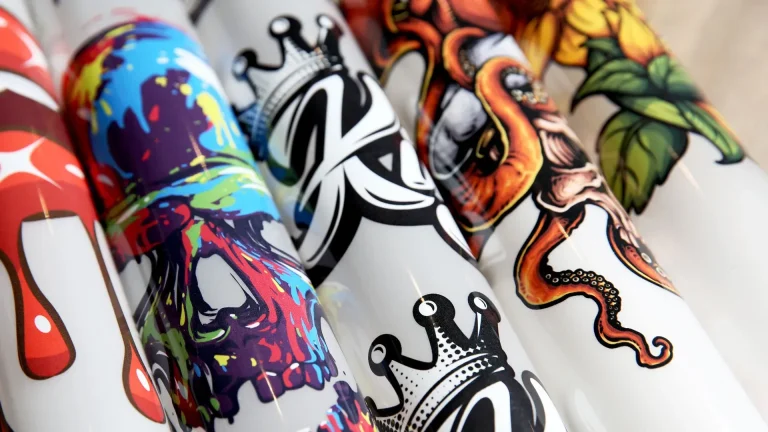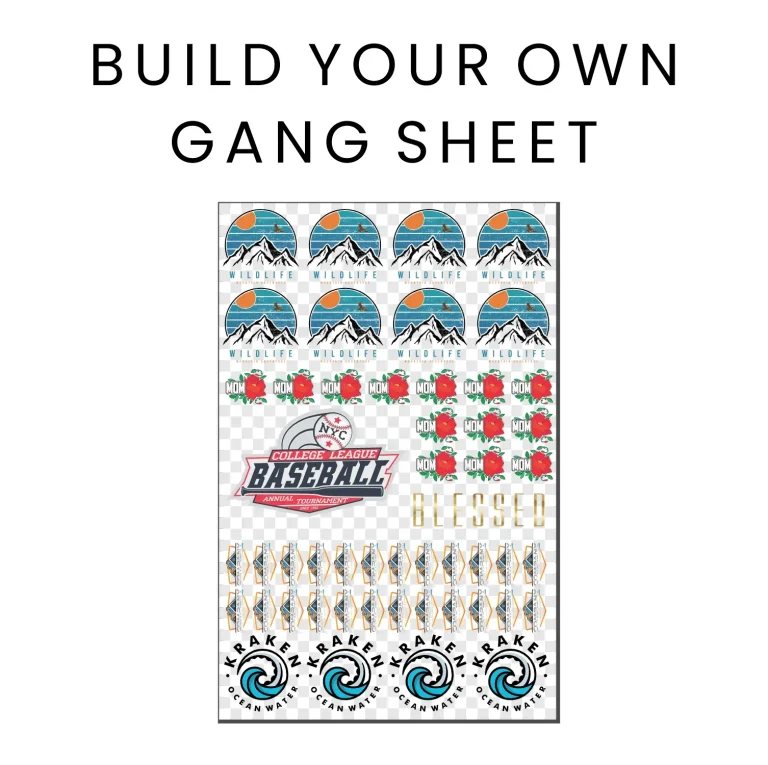**DTF printing**, or Direct-to-Film printing, has emerged as a game-changer for brands looking to enhance their merchandise strategy. This cutting-edge printing method allows for the creation of vibrant, high-quality graphics on a variety of materials, making it an ideal choice for diverse product lines. The benefits of DTF printing extend beyond aesthetics; it offers brands the flexibility to produce both small and large runs economically while maintaining superior print quality. As sustainability becomes increasingly important to consumers, DTF printing’s water-based inks and reduced waste process stand out as environmentally friendly options. In this blog post, we will delve into the advantages of DTF printing and how it can refine your brand’s merchandise offerings in today’s dynamic marketplace.
Introducing **Direct-to-Film (DTF) printing**, also known as film transfer technology, represents a breakthrough in the world of commercial printing and branding. This modern printing approach specializes in applying intricate designs onto films before they are heat-transferred onto various fabrics. By incorporating DTF technology into their production workflow, brands can successfully expand their merchandise strategies with products that are not only visually appealing but also sustainable. With the increasing demand for environmentally conscious practices, brands can leverage the sustainable printing techniques associated with DTF printing to resonate with eco-aware consumers. As we explore this innovative printing method, it is essential to understand its versatility and the numerous ways it can elevate your merchandise offerings.
Understanding the Mechanics of DTF Printing
Direct-to-Film (DTF) printing is a cutting-edge technology revolutionizing how brands create merchandise. This process begins with printing designs onto a special transparent film using high-quality inks. Subsequently, the film is heat transferred onto various materials. This method is not only efficient but also versatile, allowing for the application of intricate designs on fabrics like cotton, polyester, or blends. The simplicity of the DTF process significantly reduces setup times compared to traditional printing methods, enabling brands to adapt quickly to emerging trends and market demands.
Furthermore, DTF printing eliminates the limitations often associated with other methods like screen printing and direct-to-garment printing. It accommodates a wide range of graphic complexities, meaning brands can embrace creativity without worrying about the technical constraints of other printing techniques. As a result, businesses can produce stunning merchandise that resonates with their audience while optimizing their production workflow.
Key Benefits of DTF Printing for Brands
One of the most significant advantages of DTF printing is its ability to produce high-quality prints with vibrant colors and fine details. Unlike traditional printing methods, which often compromise color intensity, DTF ensures that each print maintains its visual impact. This is crucial for brands as they aim to create merchandise that is visually appealing and representative of their identity. With DTF printing, companies can produce everything from simple logos to complex, colorful designs, enhancing the overall attractiveness of their product offerings.
Moreover, DTF printing provides cost-effective solutions, particularly for brands that want to experiment with limited edition products. Since DTF does not require large minimum orders, brands can test new designs without the financial burden typically associated with bulk orders. This flexibility is particularly advantageous for startups and smaller businesses looking to establish their presence in a competitive marketplace. By allowing brands to react quickly to customer demand, DTF printing plays a pivotal role in their overall merchandise strategy.
The Role of Sustainability in DTF Printing
As consumers increasingly prioritize environmental responsibility, brands must adapt their practices to align with these values. DTF printing stands out due to its use of water-based inks, significantly reducing the environmental footprint compared to traditional solvent inks. This shift not only enhances the sustainability of production processes but also enables brands to market their products as environmentally friendly, appealing to eco-conscious consumers.
In addition, the efficiency of DTF printing minimizes waste generated during production. Traditional methods often result in surplus materials that contribute to environmental degradation. By contrast, DTF’s streamlined approach reduces excess production and encourages a more sustainable use of resources. Brands that highlight their commitment to sustainability through the adoption of DTF printing can foster a positive brand image and cultivate a loyal customer base that values ethical practices.
Maximizing Production Speed with DTF Printing
In an ever-accelerating market, speed is a critical factor for brands looking to capitalize on trends and consumer interests. DTF printing boasts rapid production capabilities, allowing businesses to fulfill orders without extensive delays. The film transfer process is quick, enabling brands to maintain a steady flow of inventory and meet customer demands effectively. Brands that utilize DTF printing can streamline their operations, ensuring they remain competitive during peak seasons.
Additionally, the efficiency of DTF printing aids in quicker turnaround times for prototypes and sample orders. For brands experimenting with new merchandise designs, this rapid prototyping capability allows for swift feedback and adjustments based on customer responses. This agility in production not only saves time but also fosters a dynamic approach to product development, ensuring brands stay responsive to their market.
Unleashing Creative Potential with DTF Printing
DTF printing empowers brands to explore their creative boundaries like never before. The advanced technology supports high-resolution designs, enabling intricate details and vibrant colors to truly come to life on fabric. This flexibility allows brands to create stunning merchandise that captures attention and communicates their unique identity effectively. From captivating photographic prints to bold graphic designs, the opportunities for artistic expression are limitless.
By embracing DTF printing, brands can differentiate themselves through innovative merchandise that resonates with their target audience. This creative freedom enables businesses to tell their story through visual elements, forging stronger emotional connections with consumers. As a result, brands can stand out in a crowded marketplace, leveraging their distinctive designs to attract and retain customers.
Implementing DTF Printing in Your Merchandise Strategy
To effectively integrate DTF printing into your merchandise strategy, it’s essential to conduct thorough market research. Understanding your consumer’s preferences will guide your design choices and product offerings. Consider collaborating with designers who can create visually compelling works that not only represent your brand identity but also appeal to your audience’s tastes.
Additionally, selecting high-quality materials compatible with DTF printing is crucial for achieving the best results. The durability and feel of the fabric can significantly affect the overall quality of your merchandise. By taking these steps, brands can ensure a strong foundation for their DTF printing endeavors, setting the stage for a successful and engaging product line.
Frequently Asked Questions
What is Direct-to-Film (DTF) printing and how does it work?
Direct-to-Film (DTF) printing is a modern printing technique that involves creating designs on a special film, which are then transferred onto fabric using a heat press. This process allows for vibrant and detailed graphics on various materials, making it a versatile option for brands looking to enhance their merchandise.
What are the main benefits of DTF printing for brands looking to expand their merchandise strategy?
The benefits of DTF printing for brands include flexibility with various materials, cost-effectiveness for short runs, high-quality results with vivid colors, and the use of sustainable printing practices. These advantages help brands create appealing merchandise that resonates with consumers.
How does DTF printing contribute to sustainable printing initiatives?
DTF printing is considered a sustainable printing option as it often utilizes water-based inks that are less harmful than traditional solvent-based alternatives. Additionally, the process generates less waste compared to traditional screen printing methods, appealing to eco-conscious consumers.
Can DTF printing be used for different types of merchandise?
Yes, DTF printing is highly versatile and can be applied to a wide range of merchandise, including t-shirts, hoodies, tote bags, and hats. This adaptability allows brands to cater to diverse customer preferences and expand their product offerings effectively.
How can brands ensure high-quality results with DTF printing?
To achieve high-quality results with DTF printing, brands should invest in quality designs, choose compatible materials, and work with skilled printers who understand the DTF process. This attention to detail will enhance the overall appearance and durability of the merchandise.
What are the speed advantages of using DTF printing in a brand’s production process?
DTF printing allows for quicker production schedules, enabling brands to respond rapidly to changing trends and customer demands. The efficient film transfer process streamlines production, making it easier for businesses to meet tight deadlines and capitalize on new opportunities.
| Key Points | Description |
|---|---|
| What is DTF Printing? | A modern printing technique where designs are printed on a special film and transferred to fabric via heat press, offering vibrant graphics on various materials. |
| Benefits of DTF Printing | Includes flexibility with materials, cost-effectiveness for small runs, high-quality results, sustainability through water-based inks, speed of production, and greater design freedom. |
| Implementation Strategies | Research market preferences, design thoughtfully, choose quality materials, test products, and effectively market the benefits of your merchandise. |
Summary
DTF printing is a revolutionary printing technology that enables brands to enhance their merchandise strategy significantly. By utilizing this method, businesses can produce high-quality, vibrant products that reflect their unique identity while appealing to a wide audience. The ability to cater to various materials, combined with cost-effective small batch production, makes DTF printing particularly advantageous for startups and established brands alike. Moreover, considering the increasing consumer preference for sustainable practices, DTF printing’s use of eco-friendly inks aligns perfectly with modern market expectations. Embracing DTF printing not only elevates product quality but also fosters a deeper connection with customers, positioning brands effectively in a competitive landscape.






